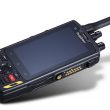The times of lower frequencies and glowing tubes
Did you ever hear those discussions of how U.S. Air Force radios are so much more sophisticated compared to those on Russian military aircraft? How the poor Russians — imagine — still use tube-type equipment?
Then someone pointed out that tube-type equipment resists damage from electromagnetic pulses caused by nuclear explosions. Transistor equipment might be vulnerable. Um, maybe there’s something to those vacuum tubes. Maybe we ought to go back to vacuum tubes.
Which brings us to VHF land mobile radio and 800MHz interference. Hang on; I know it’s a sharp turn.
For years, public safety agencies have migrated to ever-higher frequencies in pursuit of additional communications capacity and more features. Nowhere is this more evident than in large cities and heavily populated states. Even so, the majority of the nation’s 17,000 state and local law enforcement agencies still use VHF.
Public safety agencies took advantage of the opportunities to use 800MHz frequencies not reserved for their use, but were nevertheless available to them if otherwise unoccupied. This placed their channels adjacent to commercial users. That was not a problem while commercial operators and public safety systems used compatible technology: relatively few high-elevation sites, high power and analog modulation.
When commercial channels converted to low-elevation, low-power, digital modulation system architecture that emulated cellular telephone systems, then it became a problem. As commercial digital system base stations speckle the public safety system coverage area, they blank out public safety radio reception within various distances from the commercial towers.
Nextel towers seem to cause the most problems because that company’s frequencies are more often closer to channels used for public safety radio. Also, its digital modulation fills to the edge (and some say spills over) its channel bandwidth in a way analog modulation does not. But interference can also come from cellular carriers on nearby frequency bands, farther away than adjacent channels.
Now let’s say it as it is: The commercial carriers would just as soon the public safety users put in more antenna sites to increase signal strength and overcome the interference. They would just as soon public safety users buy more expensive portables — the most expensive, actually — that offer incrementally better interference rejection. They would just as soon public safety users sign up to use the commercial networks and forget about having their own.
On the whole, they would prefer that public safety radio users obtain and spend taxpayer money to take those steps so commercial carriers don’t have to reduce power, abandon various frequencies, avoid certain tower locations or use transmitter filters.
Meanwhile, VHF starts looking good in comparison. It’s so far removed from 800MHz that there’s no interference from those digital systems. Too bad not enough VHF frequencies are available for new urban systems.
Some have tried.
An innovative scheme for a statewide public safety system in Wisconsin proposed the use of VHF frequencies. The U.S. Army released an initial 20 VHF channels to the state. The state built a pilot system with four sites for digital trunked radio communications. It covers the I-90 and I-94 interstate corridors from Beloit to Eau Claire.
Too bad the remaining channels needed for statewide coverage won’t be forthcoming. It would require the army to release frequencies in other parts of the state and for county sheriffs to kick in some of their VHF channels, and they’re too reluctant. Wouldn’t Wisconsin have a beauty, though? A digital trunked system so far from 800MHz that Wisconsin could scoff at interference from cellular-type systems.
No one in the federal government is noticeably stepping up to pressure commercial carriers on the digital interference problem. Following music played by Congress, the FCC dances toward the Sept. 12 auction for 700MHz spectrum. The FCC is seemingly unconcerned that the rules it modified to help commercial carriers avoid TV interference will, unless reversed, set the stage for interference to public safety systems similar to what they now receive in the 800MHz band.
Where’s a congressman, a senator, a commissioner or even a bureau chief who will speak out?
We like what VHF has to offer. There just isn’t enough of it for the largest cities. The FCC must fix the rules for the 700MHz band before the auction, and it should hold commercial carriers responsible when they cause 800MHz interference.
Put that in your vacuum tube. It’ll smoke itself.












